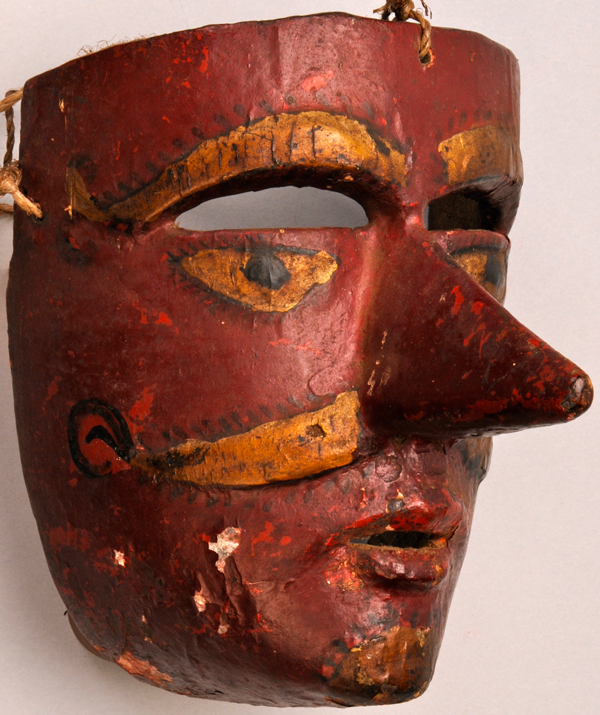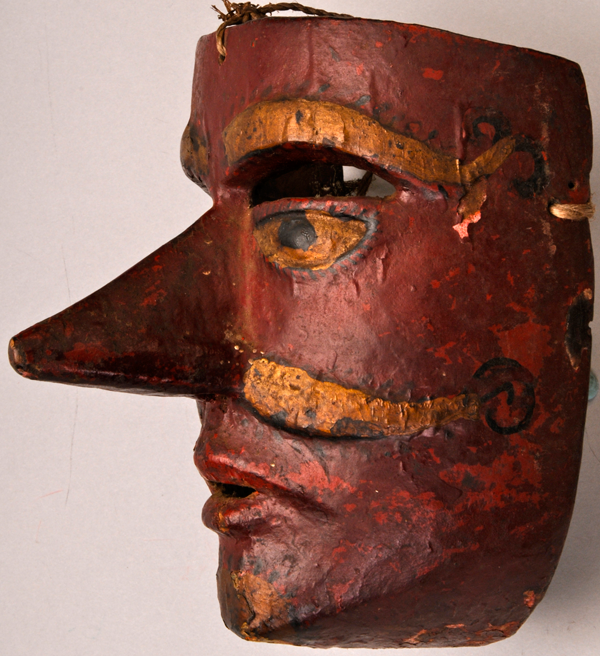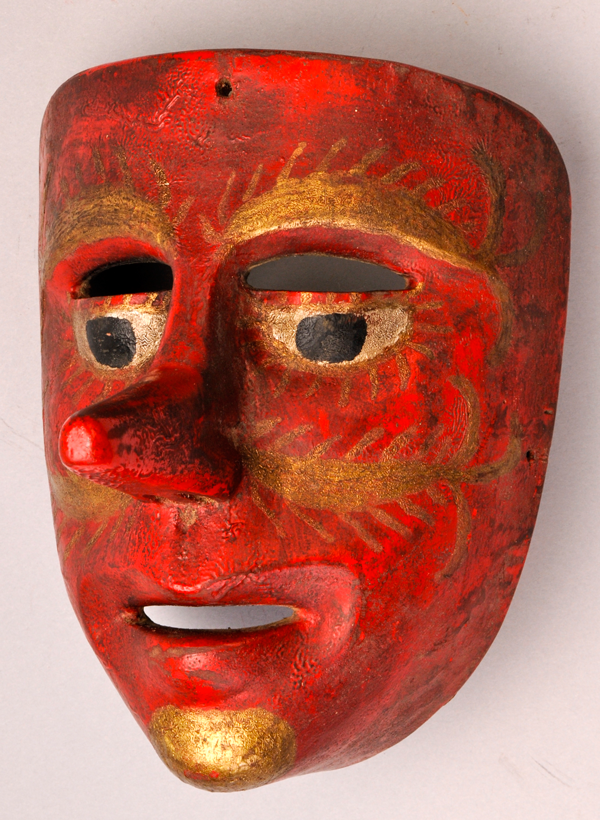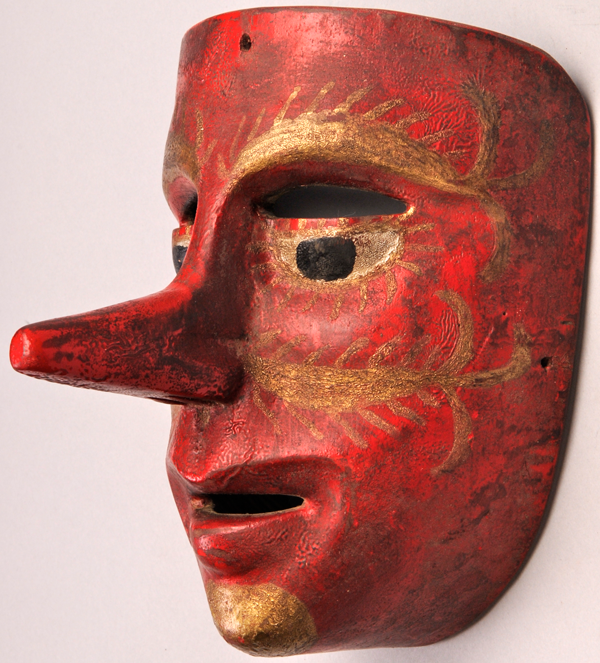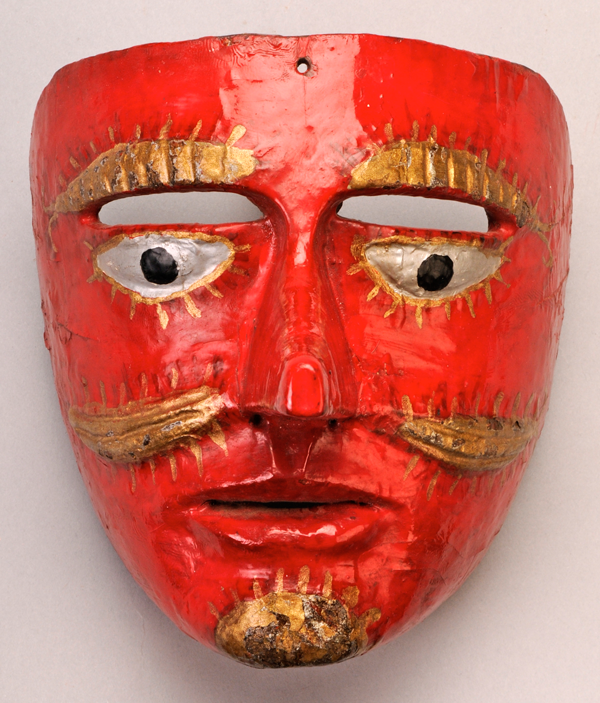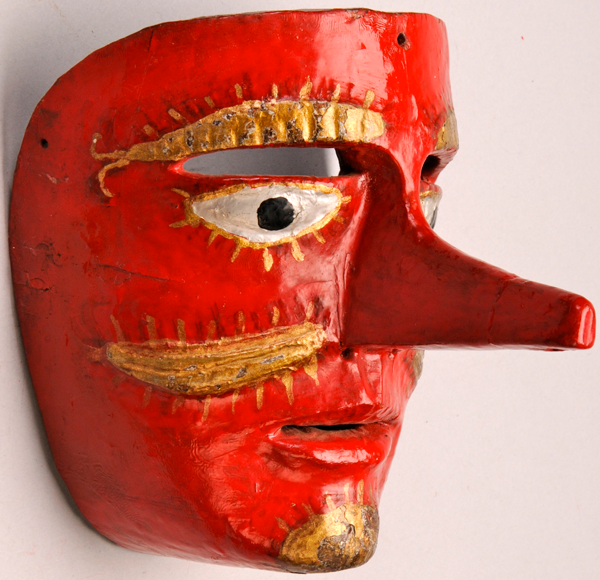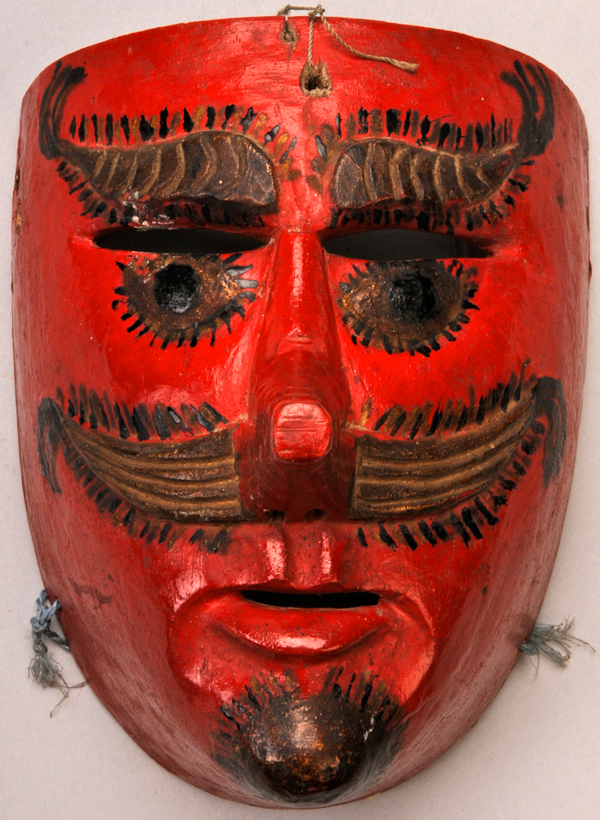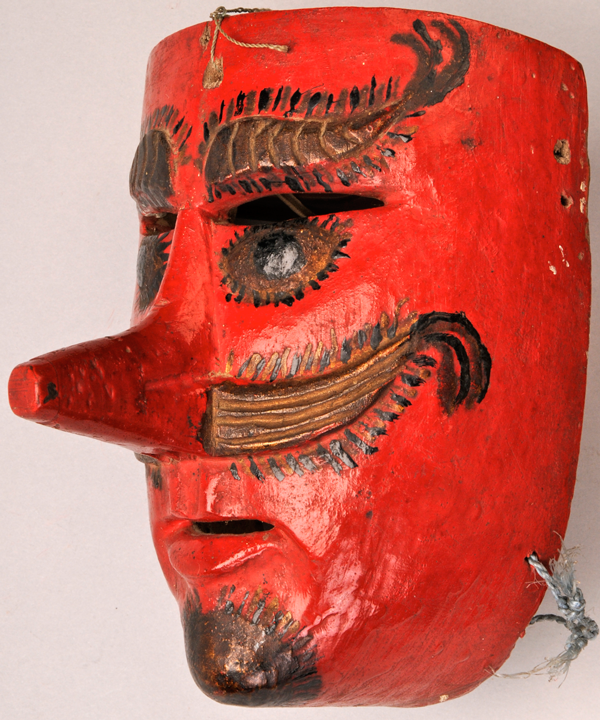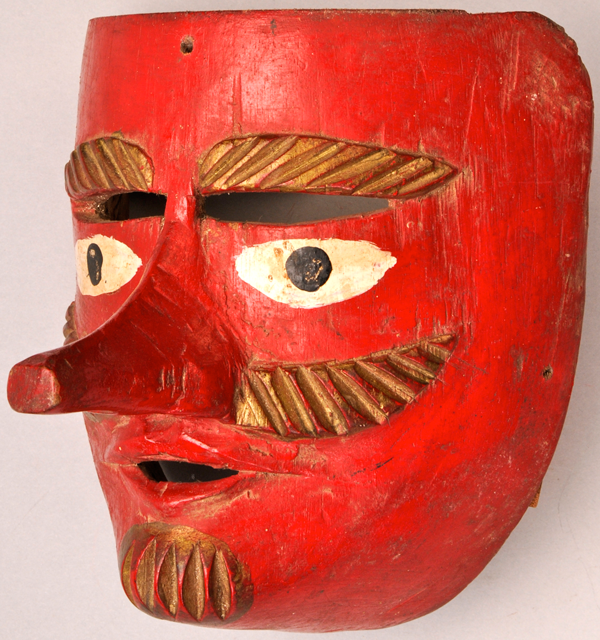In about 2006, when Vernon Kostohryz and Carlos Moreno Vásquez were searching for old masks in the area of Filomeno Mata, Veracuz, they met an elderly man who had a mask that he wanted to sell; he had danced with this mask for many years. He told them that this mask had been used in the Hormegas dance and that the carver was Benito Juárez Figueroa. This was the mask that introduced me to this remarkable carver, who was born in 1910 and died in 1994, and to the Hormegas dance, a variation on the dance of the Santiagueros. It is obviously old and heavily used, with one coat of paint over another in two or three layers.
The eyes, brows and mustache are carved in low relief and the lips are carefully shaped.
This mask is 7 inches tall, 5½ inches wide and 5 inches deep.
The back has a beveled area around the eyes, but this is relatively flat. There is a depressed area to accommodate the dancer’s nose. The area for the dancer’s mouth does not have a special shape. We will see something similar in the masks that follow, although each mask differs from the one before in one way or another, as if we are observing the process of change in the carver’s style over time. Because we lack specific dates for these masks, I can only guess that this is the meaning of this variation.
This next mask seems particularly old and beautiful. The back of this mask appeared at the end of last week’s post. I find the mouth of this mask so graceful.
This mask is 7 inches tall, 5¾ inches wide and 6 inches deep.
The back of the second mask is carefully carved, but of a very simple design.It demonstrates extreme wear.
There is a saying, “The more things change, the more they stay the same.” I was reminded of these words as I compared these masks. Each has elements that remind one of the others, to create the impression that they are all by the same carver, yet none of them look the same. The next has bright red paint to enhance its bold lines.
I like the way that the nose meets the forehead. Some of the others in this group have a similar design, although not quite as bold.
This mask is 6½ inches tall, 5¾ inches wide and 5½ inches deep.
This is another old and heavily worn mask. As with the others, the design of the back is simple and subtle.
The design of the fourth mask echos that of the second and third masks, but with enhanced decorative elements.
As with the second mask, the carving of this one is particularly sensitive around the mouth.
This mask is 7½ inches tall, 5½ inches wide and 5 inches deep.
This is another old and worn back.
The last mask has what I perceive to be a simplified design. This form was apparently the one that Benito adopted later in his career. When Vernon Kostohryz, Carlos Moreno Vásquez and I walked through the village of Ixtepec, Puebla, where Benito lived from age 20 to age 60, we were offered half a dozen masks of this design, some intact and others broken.
This mask is 6¾ inches tall, 6 inches wide and 5 inches deep. Although it is only slightly wider and nearly the same height as the others, it appears diminutive in comparison.
This newer mask has a moderate wear pattern, more darkly stained around the rim and less in the center. An older mask gradually becomes stained over most of the back.
Next week I will tell you about the wonderful experience that my wife Lucy and I had when we returned to the towns of the Sierra de Puebla to give copies of my book to carvers, dancers, or family members who assisted me in its preparation—The Book Trip. This occurred exactly two years ago.

